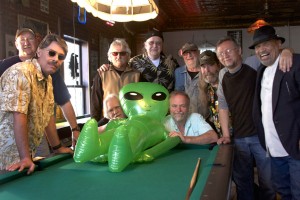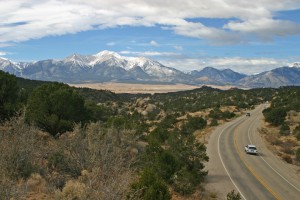This story is an excerpt from Hal Walter’s forthcoming book, “Wild Burro Tales.” The book includes pen-and-ink sketches by Westcliffe artist Lorie Merfeld-Batson, and should be available in May through local booksellers and amazon.com. Check out www.hardscrabbletimes.com for news about the book’s release.
Early day prospectors combed the West looking to strike it rich. I would venture many also were searching for something other than monetary reward — intangible things like freedom, independence, and a close bond with the land. Matching strides with these adventurers were trusty pack burros carrying their gear and food, and providing invaluable companionship.
Burros have been used as beasts of burden since domestication. They are especially well-suited for traveling rugged terrain, can carry healthy loads, fit through tight spots, and survive on meager feed and water. Their feet are hard as rock. Their strength, endurance, and determination are even tougher.
If you’re going to head into the backcountry for a day or more, a burro can extend your enjoyment by both lightening your load and also improving your comfort level. I’ve found most large-standard burros can carry somewhere between 75 and 100 pounds, more or less, all day. I say more or less because the maximum load is very much dependent upon the animal’s fitness and strength levels, and the terrain and distance over which the load will be carried. No need to bring freeze-dried or dehydrated foods. We often serve up grilled steaks for dinner and fresh eggs for breakfast. And we sleep on thick foam pads in spacious tents.
Over the years some of the greatest adventures I’ve had in the backcountry have been on pack trips with my burros. We load them up with gear and good food and head off into the wilderness. Typically we spend three days out, but we’ve gone for overnight trips and five-day treks as well. Time and ambition are the only limitations. And the greatest reward might be falling into a peaceful sleep with the sounds of a rushing stream and burros cropping high-meadow grass in the background.
There have been so many of these backcountry adventures over the years that they all tend to blur into one big psychic trek with friends and family. Most of these pack trips have been in the nearby Sangre de Cristo mountains. I favor trips in the late summer and early fall mostly to avoid thunderstorms and heavy rain which are daily threats mid-summer. At these altitudes, early summer trips also can be hampered by lingering snow well into June.
I recall a moonlight hike into Comanche Lake, where we fished for a weekend. Several times we’ve packed into Goodwin Lake. And there have been countless trips over Music Pass into what is now the Upper Preserve of the Great Sand Dunes National Park. The campsites along Sand Creek are some of the warmer places to camp in the alpine environment. And who could forget catching and releasing 100 fish in one day at Little Sand Creek Lake?
There was a five-hour pack-in to Hunt’s Lake in the northern Sangre de Cristo range in the drought summer of 2001. The trail was very tight in several places, and the last pitch involved climbs up two very steep headwalls. We arrived at the lake to find it half-full of greenish water and a few sluggish trout seeking oxygen on its surface. It looked like a bathtub that had been slowly drained, leaving behind a ringing record of various summer heat waves and the resulting drops in water levels.
Above the lake was an immense blockfield of rock fractured from the steep mountainsides, likely due to frost action. Several times while camped at Hunt’s Lake I heard the sound of falling rock as more boulders, some as large as cars, were added to this field of stone.
The only grazing for the burros at Hunt’s Lake was in some avalanche chutes on the lake’s northwest headwall. I had staked out the four burros there and went to check on them just before dark. I could not immediately locate Spike. Suddenly I recognized him as a black wad of hair on the ground. He had somehow tangled himself badly in his picket line and fallen over. The rope was bound so tightly that I had to cut it free with my knife. And when I finally had Spike unbound he merely rolled over. He had apparently struggled until he was exhausted and was probably in shock. I thought he might die. The only hope of getting Spike back on his feet was to use the steep slope. I let him rest for a while and then began pushing his body from the uphill side. With considerable effort I was able to get him back on his feet. But he was wobbly. After some time I managed to lead Spike back to the campsite, and he stayed picketed tentside that night. The next morning he seemed no worse for the wear.
Burros can pack more than just camping gear. Once while hunting I killed a mule deer buck several miles back in the Sangre de Cristo wilderness. I had followed an old forgotten trail to an aspen glade and tracked a pair of bucks to a scrub-oak slope that afforded a shot in the early evening light. My only choice was to cache the deer overnight, then come back with a burro in the morning to retrieve it.
It was nearly dark when I began looking for a place to stash my deer, but while looking for a suitable location I noticed bear sign all over the hillside. There was a small creek in the ravine below and I spied a downed tree that had broken off several feet up its trunk and fallen directly across the steep-walled stream. An idea came to mind. I dragged the deer to the stump and managed to hang it right over the stream. Now the deer would be more difficult for bears to reach, and it would cool nicely over the chilly creek.
The next morning I returned with Spike. No bear had found the deer and it was easy to skin and quarter the carcass with it hanging. The burro flared his nostrils and snorted as I approached with the fresh cheesecloth-wrapped meat. He shifted nervously where he stood tied to a sapling just downstream from where I had left the deer. I spoke to him and held out a bloody hand, and he snorted again and stepped sideways. I placed the meat in equal amounts to either side of the burro. He reared and I thought he might yank the sapling from the ground. Then, quite abruptly, he calmed down and stood still. Quickly I loaded the meat into the panniers, trying my best to maintain balance by holding up one loaded pannier while loading the other. Then Spike and I headed for home with our venison.
Burros also can be used for packing in combination with horses. One such memorable trip was a five-day fall trek when the aspens were at the height of their color in the Sangre de Cristo range. We packed with some friends and their horses over Comanche Pass and then down the other side of the range into the Crestone Creek drainage. The landscape along this trail was stunning with red conglomerate sandstone rock, golden and reddish aspens, and a backdrop of brilliant blue sky outlined by high peaks and ridges where frosts had already dyed the tundra with pastels of fading green and brilliant orange.
From there we took the North Crestone trail to a campsite just below the lake, one of the biggest in the range. Though I saw some very large trout cruising the depths of this lake, I caught only one medium-sized cutthroat, about 15 inches. As I fished the outlet before heading back down to camp, a herd of Rocky Mountain bighorn sheep traversed the talus slope across the lake from where I cast. After a day like this it’s easy to toast the burros with a glass of red wine that they carried on their strong backs. For the trek home we took a different route, driving the burros through the expansive tundra of Groundhog Basin, over the stark and high Venable Pass, and back down to the trailhead, and civilization.
Like most of the prospectors who employed burros to explore the mountains and deserts of the West, we’ve never found any gold, silver or other riches on our backcountry adventures. What we have found is a wealth of solitude, camaraderie, and peace. These trips allow me to live in the present like no other activity I’ve ever experienced. Even just two or three days away can help wipe away the tension and pressures of modern life. For me, that’s far more valuable than any precious metal.
Hal Walter writes and edits from the Wet Mountains. You can keep up with him regularly at his blog:
www.hardscrabbletimes.com


